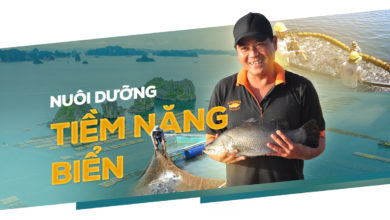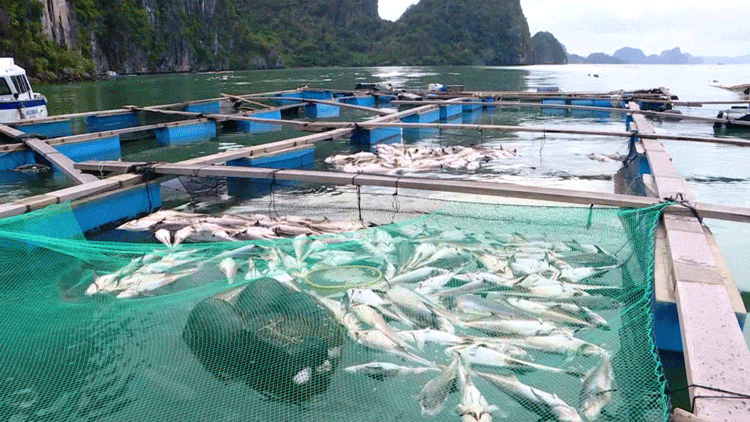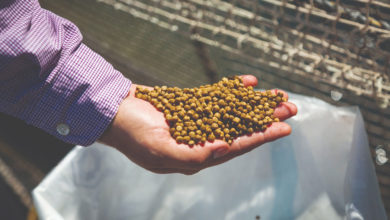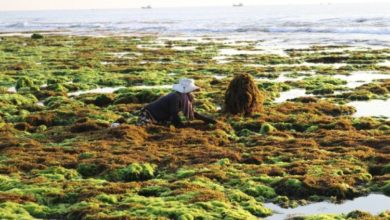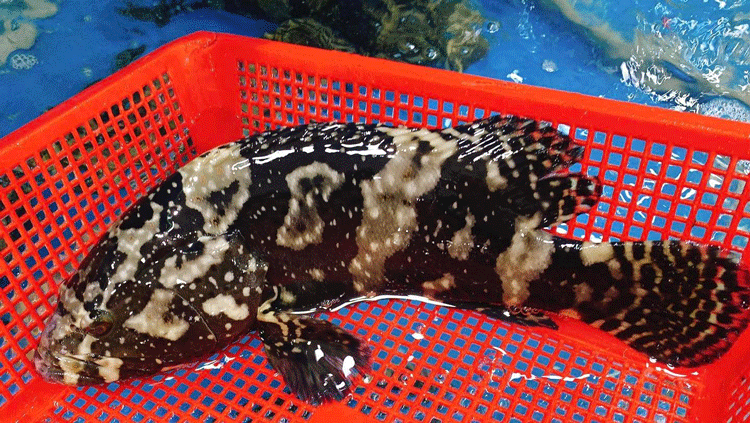Khanh Hoa advances green marine farming
Khanh Hoa is transitioning from traditional marine farming practices to high-tech offshore aquaculture. This move aims to support the province’s green agricultural transformation and foster the growth of its blue economy.
High-tech solutions drive efficiency
In Da Bac, Cam Ranh City, Phan Van Thanh, who raises cobia using HDPE cages with modern technology, shared his upcoming Tet plans. He expects to sell 4,000 cobia, each weighing around 6kg, at over VND 180,000 per kilogram. His two HDPE cages, each with a volume of 800m³, are projected to generate profits exceeding VND 800 million—double the returns compared to traditional wooden cages with the same number of fish.
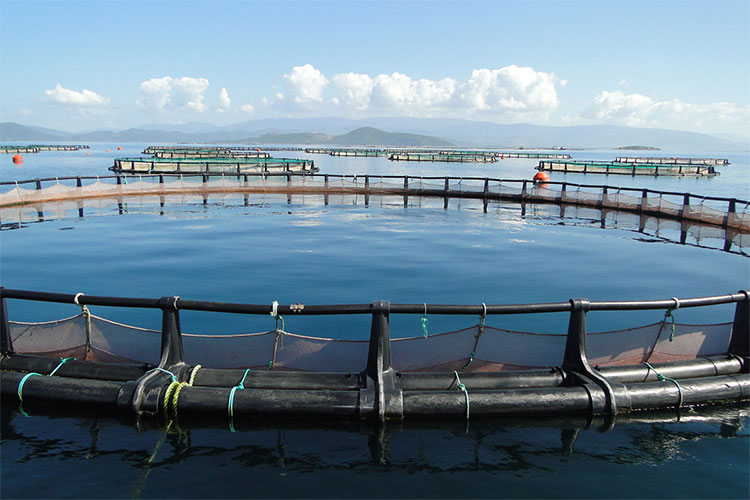
Using his smartphone connected to cameras installed on his offshore cages, Thanh checks on his fish’s health and adjusts feeding schedules accordingly. “Farming cobia in HDPE cages is both effortless and productive. The cages are sturdy enough to withstand strong winds and rough seas, while 24/7 cameras and GPS systems allow me to monitor them remotely. After feeding the fish, I can return to shore and keep an eye on everything via my phone. Offshore high-tech farming, with large cages, ensures clean, circulating water and ample space for the fish to swim, resulting in a high survival rate with only 2% losses. Many residents in Cam Lap, Cam Ranh City, are now investing in HDPE cages to farm cobia, grouper, and lobsters due to the clear benefits and profitability,” Thanh explained.
In Van Phong Bay, Australis Vietnam Co., Ltd. operates the world’s largest barramundi farm, featuring 71 HDPE circular cages and an average annual production of 10,000 tons. On their fully automated feeding barge, Joshua Nathan Goldman, General Director of Australis Vietnam, stated: “We are the largest global producer, processor, and exporter of barramundi, operating on an industrial scale with the most advanced technology in Vietnam. Over the years, we have invested heavily in modern offshore aquaculture techniques, creating a closed-loop system from production to market.”
Seeing the success of high-tech marine farming, all five members of the Van Ninh High-Tech Marine Farming Cooperative have shifted to raising lobsters and marine fish using HDPE cages in Van Phong Bay. Nguyen Phong Vu, the cooperative’s director, shared: “After years of traditional wooden cage farming and dealing with environmental challenges, we’ve moved to HDPE cages, which are more eco-friendly and resistant to strong waves. Additionally, cooperative members receive advanced farming techniques, quality breeding stock, and support services to ensure safe, sustainable production. Incorporating modern technology into marine aquaculture not only protects the marine environment but also meets international standards for quality and traceability.”
Fostering a Sustainable Blue Economy
Nguyen Duy Quang, Director of the Department of Agriculture and Rural Development, stated: “Beyond higher profits, using HDPE cages in marine farming helps adapt to climate change and reduces plastic waste. Technology-monitored feeding ensures precise amounts, minimizing environmental pollution from excess feed. Transitioning to high-tech marine farming will reshape local production practices, promoting environmental protection and enhancing the landscape, while also supporting the development of eco-tourism. The province is progressively adopting green aquaculture, aiming to develop marine farming into a modern, industrial, and environmentally friendly sector, in alignment with the Politburo’s Resolution No. 09 on the development of Khanh Hoa Province through 2030, with a vision towards 2045.”
To implement high-tech marine farming, the provincial People’s Committee has approved plans to expand pilot projects across Khanh Hoa’s coastal areas. The expansion will roll out in three phases, targeting a total area of 240 hectares by 2029.
The province’s focus is on enhancing marine farming productivity and product value, improving farmers’ incomes through job creation, and targeting high-standard seafood exports that meet food safety and market requirements. At the same time, this approach contributes to protecting the marine environment, promoting sustainable blue economic growth, and gradually establishing offshore farming zones 3 to 6 nautical miles from the coast. This will help ease the pressure on nearshore farming and reduce spatial conflicts among different marine economic sectors in key coastal areas.
VFM


